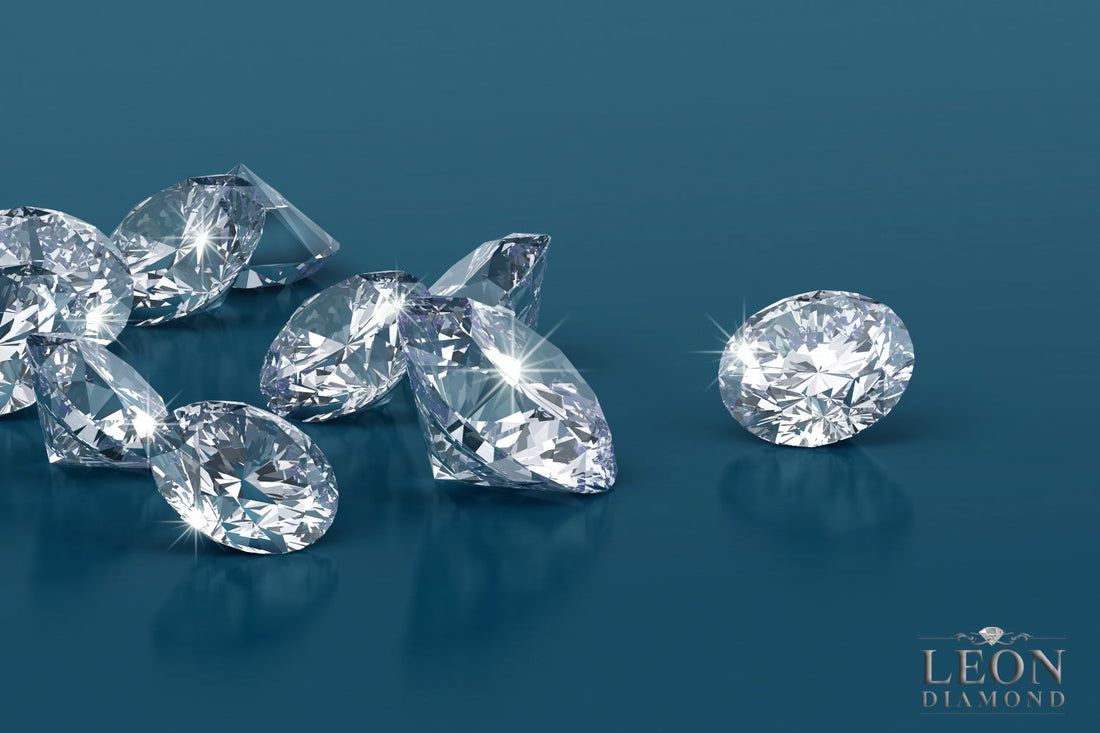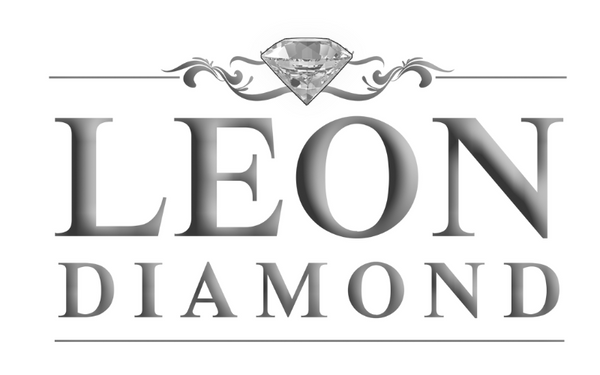
The Science Behind the Sparkle: Why Diamonds Shine Bright
Share
Diamonds have captivated humanity not just for their beauty, but for the remarkable optical effects they produce. Their intense sparkle results from the way light interacts with their internal structure, governed by principles of physics and geometry.
Key factors such as refraction, dispersion, and internal reflection contribute to their brilliance and fire. However, it's not just nature; precise cutting and craftsmanship determine how effectively a diamond can reflect and refract light.
In this blog, we'll delve into the scientific reasons behind a diamond's shine, from its crystal structure to facet alignment, providing insight into what truly distinguishes diamonds from other gemstones.
Light Interaction Within Diamonds
Diamonds don't just reflect light, they transform it. Their sparkle is a result of a complex interaction between light and the gem's internal structure.
Refraction: Bending Of Light
When light enters a diamond, it slows down and bends. This bending is known as refraction. Diamonds have a high refractive index of approximately 2.42, meaning that light slows down dramatically as it passes through.
This bending does a few key things:
- Changes the light direction inside the diamond
- Increases the internal travel time of light
- Maximizes brilliance by allowing more chances for light to bounce
Due to this, diamonds appear significantly brighter than most natural materials.
Internal Reflection: Light Trapped Inside
Once light is refracted into a diamond, it reflects off internal surfaces rather than passing straight through. This phenomenon is known as total internal reflection, which is what traps the light inside, giving diamonds their distinctive sparkle.
For this to happen effectively:
- The cut must be precise
- Angles must support maximum reflection
- The pavilion must direct light back up through the crown
When done right, this process keeps light bouncing until it exits through the top of the stone, right into your eye.
Dispersion: Fire In Motion
Diamonds also break white light into spectral colors. This effect is called dispersion, often referred to as fire. You see little flashes of blue, yellow, or red when a diamond moves.
Dispersion occurs because:
- Light wavelengths travel at different speeds
- Shorter wavelengths bend more sharply
- The diamond splits light into separate colors
This rainbow-like effect adds to the brilliance and visual appeal of diamonds. It's a key reason why their sparkle feels alive.
The Role Of Diamond Cut And Angles

Even the best raw diamond won't sparkle without the proper cut. The cut has a greater impact on a diamond's brilliance than its carat weight, color, or clarity.
How Cut Controls Light Performance
A diamond's cut determines how well it captures and reflects light. This doesn't refer to its shape but to the precision of its proportions, facets, and symmetry.
A well-cut diamond:
- Reflects more light internally
- Reduces leakage of light from the bottom or sides
- Enhances both brilliance (white light) and fire (colored light)
Ideal Proportions For Maximum Sparkle
To maximize sparkle, a diamond must meet specific geometric criteria. The most famous example is the round brilliant cut, which has 58 facets perfectly arranged to optimize light return.
Key angles to note:
- Table percentage: Should be around 54–57%
- Crown angle: Typically 34–35 degrees
- Pavilion angle: Around 40.6–41 degrees
Even minor deviations from these ideal angles can significantly reduce sparkle.
Impact Of Facet Alignment
Facets are the flat surfaces on a diamond. The way they're arranged determines how light behaves inside. Precise facet alignment ensures:
- Even light distribution
- Strong contrast patterns
- Intense, balanced sparkle
In poorly cut diamonds, misaligned facets cause:
- Light leakage
- Dull or lifeless appearance
- Poor fire and brilliance
So if you're wondering why two diamonds of the same size and clarity can look entirely different, the cut is usually the reason.
The Importance of Diamond Clarity
Light needs a clean path to bounce and reflect. That's where clarity plays a crucial role in determining the brilliance of a diamond.
How Inclusions Affect Sparkle
Inclusions are tiny flaws or particles trapped inside the diamond during formation. If they're large or poorly positioned, they can block or scatter light, reducing sparkle.
Types of clarity-related issues include:
- Clouds: Multiple pinpoint inclusions that reduce transparency
- Feathers: Tiny fractures that reflect light poorly
- Crystals: Mineral inclusions that can interrupt brilliance
The fewer and smaller these inclusions, the brighter the diamond appears.
Clarity Grades and Visibility
The GIA clarity scale ranges from Flawless (FL) to Included (I1–I3). Most diamonds have some flaws, but only those visible under 10x magnification or to the naked eye significantly impact sparkle.
Tips for clarity and shine:
- VS1–VS2 clarity offers excellent value without visible flaws
- Avoid I1–I3 grades for high-sparkle expectations
- Always check diamond clarity under proper lighting
Remember, clarity isn't about perfection. It's about allowing light to move without obstruction.
Why Diamond Color Affects Brilliance
While sparkle mainly comes from cut and clarity grades, color also plays a subtle but essential role.
Less Color Means More Reflection
Color in diamonds is graded from D (colorless) to Z (light yellow or brown). A diamond with less color allows more white light to reflect without distortion.
Color affects sparkle in the following ways:
- Colorless diamonds reflect pure white light
- Faint yellow or brown tones absorb light slightly
- Higher color grades offer more contrast and shine
That's why colorless and near-colorless diamonds (D–G) often appear brighter than lower-grade stones.
Fancy Colored Diamonds: A Different Story
Interestingly, fancy-colored diamonds (such as blue, pink, or yellow) shine differently. Their sparkle is influenced more by hue and saturation than traditional brilliance.
These diamonds:
- Reflects more color than white light
- Often have special cuts to enhance hue over sparkle
- Shine in a unique, bold way that still captivates
Whether colorless or vibrant, the key is balance. The best sparkle comes from diamonds with minimal body color and high-quality cut.

It's not just what's inside the diamond; it's also about where you see it.
The Environment Shapes Perception
Diamonds sparkle differently in various lighting conditions. Their full brilliance is best showcased when a mix of light sources is present.
Types of light and their effects:
- Daylight: Shows natural brilliance and color accuracy
- Spotlighting: Enhances fire and contrast
- Diffuse lighting: Reduces sharp sparkle, making the diamond appear soft
Movement is another factor. A still diamond reflects less light than one that moves, which is why diamonds appear more alive when worn.
Jewelry Settings That Enhance Light
The way a diamond is set also impacts its brightness. Open settings allow more light to enter, while enclosed settings may reduce sparkle.
Popular settings that support shine:
- Prong settings: Allow maximum light entry from all sides
- Bezel settings: Protect the diamond, but may limit brilliance
- Halo settings: Reflect extra sparkle through smaller surrounding stones
The goal is to give light enough freedom to bounce and return through the crown.
The Science Behind The Sparkle
A diamond's sparkle is no accident. It's the result of a complex blend of science, craftsmanship, and natural brilliance. From how it bends light to the precision of its cut, every element plays a crucial role in determining its brightness and beauty.
Understanding this science empowers you to make informed choices, appreciate sincerely, and admire fully. So the next time you catch a diamond glinting in the light, you'll know there's more than magic behind that sparkle.
Explore expertly cut diamonds at Leon Diamond and experience brilliance shaped by both nature and precision.
Frequently Asked Questions
What makes diamonds sparkle more than other gemstones?
Diamonds sparkle more due to their high refractive index, which bends and traps light. When cut precisely, light disperses into rainbow colors, creating brilliance and fire.
How does a diamond's cut affect its sparkle?
Cut is the most critical factor. Ideal proportions and angles reflect light through the top, while poor cuts let it escape, making diamonds look dull.
What are brilliance, fire, and scintillation?
- Brilliance: white light reflection.
- Fire: rainbow flashes.
- Scintillation: sparkle seen with movement.
These effects combine to create a diamond's glow.
Why is total internal reflection critical?
It traps light inside the diamond until it exits through the top, producing intense brightness. This only happens with proper cuts and angles.
Do clarity and color affect sparkle?
Yes, but less than cut. Colorless, high-clarity diamonds reflect light more cleanly, but even flawless stones appear dull if poorly cut.
